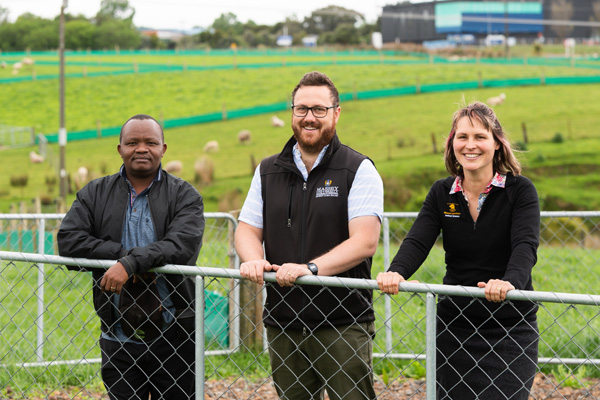Wairarapa sheep farmer Rob Dick is on a mission to reduce his farm’s environmental footprint as quickly as possible – and his approach starts with the soil.
The actions he’s taking to manage his carbon footprint earned him an award in the Greater Wellington’s 2020 Ballance Farm Environment Awards.
Rob’s understanding of how land-use impacts climate has led to careful soil and fertiliser management, significant native planting and the installation of extensive drainage.
He’s made huge environmental strides while continuing to maintain a highly productive hogget grazing operation and strong community connections.
“It’s a lot of work but when you start seeing results, you quite enjoy the process,” Rob says.
Rob believes respecting soil structure should be a farmer’s top priority, with it ultimately leading to a boost in live-weight gain.
“Soil is the farm’s life really – if you get the soil right, the production and the rest of the farming system will follow suit.”
As such, it’s critical to protect soil from damage such as pugging, and to make careful planting choices. Easterbo’s soil is predominantly clay, with limited top soil, and Rob has switched from grass to plantain and red clover to help affix nitrate into it. This has resulted in healthier plants, less need for fertiliser and – ultimately – has boosted lamb growth rates.
“I lamb in October and the plantain is good for producing milk in the ewes – resulting in good weaner weights in a short space of time. Red clover is good for growth rates too, especially on the clay soils.
“I’m trying to set up a system that uses different herbs to produce a quick liveweight gain before summer comes along and we restock again. It’s also a good idea to look at your stock policy. A lot of farms stick with the status quo and it’s good to challenge that and look at other options.”
A good idea for farmers and growers who want to reduce their carbon footprint is to divide the farm into three profiles.
Identify the most productive areas, those that are less used, and any in the middle, Rob says.
“Identify what you can fix more quickly and get onto that, rather than trying to do the whole farm. It’s also good to identify the weak spots – for example, a lot of my native planting has been done in damp, relatively unused areas.”
Since 2008, Rob has put in more than 8500 native plants in wetland and riparian areas. He has sought a lot of advice, including from regional council staff, to understand which plants will thrive in certain locations and the type of birdlife they’ll attract.
“In wetland areas, some plants will grow a lot quicker than on dryer areas. I’ve planted flax and tussock that are great at soaking up nutrients as well.”
As devoted as he is to Easterbo, Rob also rates the benefits of taking a break and getting involved in the local community.
“I really enjoy seeing the results of giving back to the community – for example through fundraisers. There are certain times of the year when you know you’ll be a bit quieter and that’s the ideal time to get involved in things.
“It’s important to get off the farm because you come back with a different attitude – often seeing things with fresh eyes.”
TOP TIPS:
- Respect and protect the soil
- Divide your property into different profiles
- Seek advice on planting, particularly from regional councils
- Take time out for yourself and to get involved in the community




